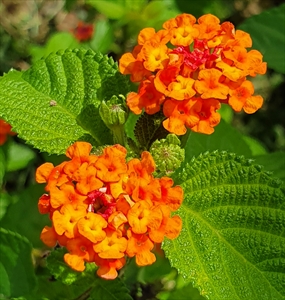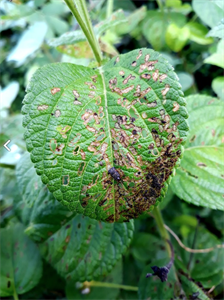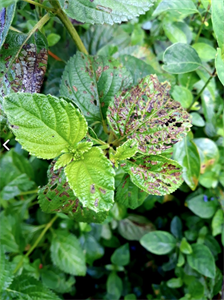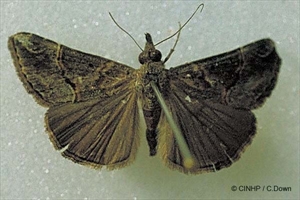- Widespread. Africa, Asia, North, South, Central America, the Caribbean, Europe, Oceania. In Australia and many Pacific island countries.
- An invasive bush that grows in dense impenetrable clumps or as climbing vines over large areas, threatening improved pastures, plantations, native vegetation and animals, creating home to vermin, shelter for organisms carrying human disease, and providing combustible material for hotter than usual bushfires. Livestock and children at risk from poisonous seeds.
- Stems square, with or without spines, leaves in opposing pairs, each about 6 cm long, bright green, with serrated margins, covered in fine hairs. Flowers in a cluster about 3 cm across, white, cream, pink, orange and red. Fruit berry-like, purplish-black when mature, producing numerous seeds, remaining viable for several years.
- Spread: layering, by birds and mammals, and long distances in horticultural trade.
- Biosecurity: listed by IUCN among 100 of World's Worst Invasive Species. National legislation is needed to control its importation and release.
- Natural enemies: many have been reported but it is still a problem weed because of the many varieties and environments where it thrives.
- Cultural control: dig out; slashing; raking, ploughing, bulldozing; burning; revegetation using improved pastures, ground legumes, trees. All methods require checking for regrowth, and perhaps herbicide spot-treatment.
- Chemical control: in Australia: 2,4,-D (amine); 2,4-D + picloram; fluroxypyr; fluroxypyr + aminopyralid; glyphosate (and Fiji); glyphosate + metsulfuron-methyl; triclopyr; picloram + triclopyr + aminopyralid; triclopyr + picloram; picloram + aminopyralid; metsulfuron-methyl (and Fiji).











